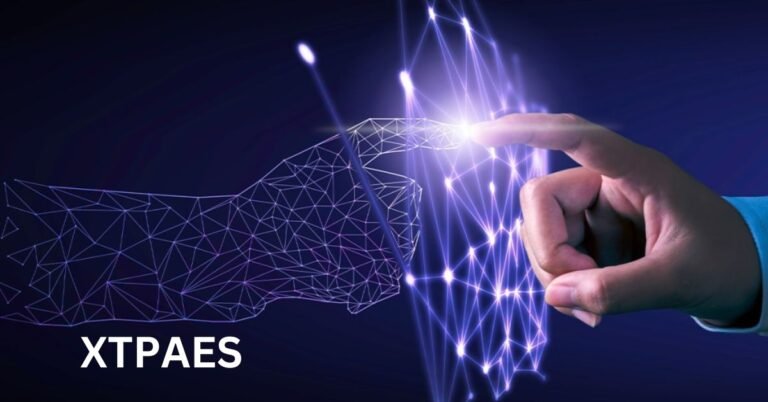Introduction
In the constantly evolving landscape of technology, new innovations emerge with the potential to reshape our world. One such groundbreaking innovation is “XTPAES” (eXtreme Technology for Proactive Artificial and Enhanced Systems). This cutting-edge concept represents a fusion of artificial intelligence (AI), advanced robotics, and proactive systems designed to enhance human capabilities and societal functions. This article delves into the origins, development, and potential impact of XTPAES on various sectors.
The Genesis of XTPAES
The inception of XTPAES can be traced back to a consortium of visionary scientists, engineers, and technologists. The project began as an ambitious attempt to integrate multiple advanced technologies into a cohesive system capable of transforming both individual lives and societal infrastructures. The founding team aimed to create a platform that would not only advance human-machine interaction but also proactively anticipate and address human needs.
Core Components of XTPAES
Artificial Intelligence
At the heart of XTPAES lies its sophisticated AI algorithms. Unlike traditional AI systems that react to inputs, the AI in XTPAES is designed to be proactive. It constantly analyzes data from various sources to predict user needs and make real-time adjustments. This level of intelligence ensures that XTPAES can provide personalized experiences and solutions, enhancing productivity and convenience.
Advanced Robotics
XTPAES incorporates state-of-the-art robotics to bring its AI capabilities into the physical world. These robots are not merely tools but are integral parts of the XTPAES ecosystem. They can perform complex tasks, interact seamlessly with humans, and adapt to dynamic environments. The robotics aspect of XTPAES makes it possible to implement AI-driven solutions in a tangible, impactful way.
Proactive Systems
Proactivity is a cornerstone of XTPAES. The system is designed to anticipate problems before they arise and offer solutions preemptively. For example, in a smart home setting, XTPAES can predict maintenance needs, optimize energy consumption, and enhance security measures without requiring direct user input. This proactive approach reduces downtime, increases efficiency, and provides a more comfortable living environment.
Applications of XTPAES
Healthcare
One of the most promising applications of XTPAES is in the healthcare sector. By integrating AI and robotics, XTPAES can revolutionize patient care. Proactive health monitoring systems can predict potential health issues and alert medical professionals before they become critical. Advanced robotic assistants can support surgeons during complex procedures, improving precision and outcomes. Moreover, personalized AI-driven health plans can help individuals maintain optimal health through tailored recommendations and interventions.
Smart Cities
XTPAES has the potential to transform urban living by creating smarter, more efficient cities. Proactive traffic management systems can reduce congestion and improve public transportation. AI-driven energy grids can optimize resource distribution, reducing waste and lowering costs. Additionally, enhanced security systems can predict and prevent crime, making cities safer for residents. The integration of XTPAES into urban infrastructure promises a future where cities are not only more livable but also more sustainable.
Education
In the realm of education, XTPAES can provide personalized learning experiences that cater to the unique needs of each student. AI-driven tutors can adapt lessons based on individual progress, ensuring that no student is left behind. Robotics can offer hands-on learning opportunities in STEM fields, making education more engaging and effective. Furthermore, proactive systems can identify and address learning challenges early on, providing support where it’s needed most.
Industry and Manufacturing
The industrial sector stands to benefit greatly from the implementation of It. Advanced robotics can take on dangerous or repetitive tasks, improving worker safety and productivity. AI systems can optimize supply chains, reduce waste, and enhance quality control. Proactive maintenance systems can predict equipment failures and schedule repairs before they cause significant disruptions. By integrating It into manufacturing processes, companies can achieve greater efficiency and reliability.
Ethical Considerations
With the advent of any powerful technology, ethical considerations must be addressed. The development and deployment of It raise important questions about privacy, security, and the potential for misuse. Ensuring that the AI and robotics systems within They are used responsibly and ethically is paramount. Developers must prioritize transparency, accountability, and user consent to build trust and prevent abuses.
Challenges and Future Directions
While It holds immense promise, there are several challenges to overcome. Technical hurdles, such as ensuring the reliability and safety of advanced AI and robotics, must be addressed. Additionally, societal acceptance and the adaptation of existing infrastructure to accommodate XTPAES are critical factors. Future research and development will need to focus on refining the technology, addressing ethical concerns, and promoting widespread adoption.
FAQs
1. What is XTPAES?
It stands for eXtreme Technology for Proactive Artificial and Enhanced Systems. It combines artificial intelligence, advanced robotics, and proactive systems to enhance human capabilities and societal functions.
2. How does XTPAES work?
It uses sophisticated AI algorithms to predict user needs and make real-time adjustments. Advanced robotics perform complex tasks and interact with humans, while proactive systems anticipate problems and offer solutions preemptively.
3. In which areas can XTPAES be applied?
It can be applied in healthcare, smart cities, education, and industry. It can revolutionize patient care, create efficient urban environments, personalize learning experiences, and improve industrial processes.
4. What are the ethical considerations of XTPAES?
Ethical considerations include privacy, security, and the potential for misuse. Developers must ensure transparency, accountability, and user consent to build trust and prevent abuses.
5. What challenges does XTPAES face?
Challenges include technical reliability and safety, societal acceptance, and adapting existing infrastructure. Addressing these challenges requires ongoing research, ethical considerations, and efforts to promote widespread adoption.
Conclusion
It represents a significant leap forward in the integration of AI, robotics, and proactive systems. Its potential to enhance healthcare, transform cities, revolutionize education, and improve industrial processes is vast. However, realizing this potential requires careful consideration of ethical issues and proactive efforts to overcome technical and societal challenges. As we move towards a future shaped by XTPAES, it is essential to ensure that this powerful technology is used to benefit all of humanity, creating a smarter, safer, and more efficient world.
Read More: Cheongsam: A Timeless Icon of Elegance and Cultural Heritage

